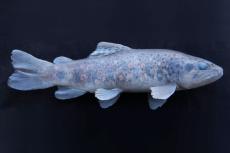Archaeologists Unearth 2,700-Year-Old Roman Port in Parion, Turkey
A significant archaeological discovery sheds light on the ancient Roman maritime infrastructure and regional trade networks.
The underwater studies in Parion, a 2,700-year-old port city from the Roman Empire in Kemer village of Biga district of Çanakkale in northwestern Türkiye, have revealed the presence of the second ancient port of the city. This discovery is the second of its kind in the region and emphasizes Parion's historical significance in Roman trade and military operations.
Significance
The ancient port, found along the northern coast of the Dardanelles, served as a crucial point for trade and military logistics between Asia and Europe. The archaeological team, led by experts from several Turkish universities, identified structures typical of Roman harbour architecture, including mooring stones and a well-preserved quay. These findings indicate the advanced engineering skills of the Romans and their strategic use of Parion to bolster both economic and military ventures.
Artifacts
During the excavation, archaeologists also discovered numerous artefacts that highlight the daily life and commerce of the time. These include amphorae used for transporting olive oil and wine, coins, and pottery, suggesting robust trade links with other parts of the Roman Empire. The port's design and the artefacts found suggest it played a vital role in the region's economic life and was a staging point for naval operations.
Understanding
This discovery significantly enhances our understanding of Roman maritime activities in the region. It provides a clearer picture of how the Romans integrated Parion into their extensive network of trade routes, benefiting from its strategic location to control naval passages between continents.
The uncovering of this ancient Roman port not only highlights the historical richness of Parion but also opens new avenues for research into the economic and military history of Roman antiquity. As excavations continue, further study of the site will yield more insights into the Roman Empire's maritime capabilities and their influence on regional trade networks.


































